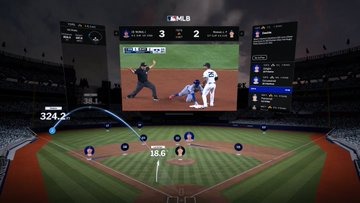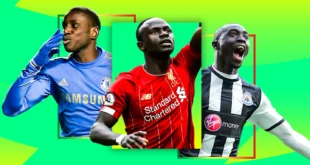The MLB season is now in full swing. As the Playoffs wrap up in the NBA and NHL, sports fans will know that the summer ahead is dominated by baseball. It’s characterized by warm, lazy days at the ballpark, America’s pastime, as they say.
Of course, not everyone goes to the games, and plenty will be watching on television and online, often through the league’s streaming service, MLB.TV.
Now, for those seeking a completely different viewing experience, VR has entered the field. Could this reshape the way we experience sports forever—or is it too niche, too costly, and too intrusive? That’s the question Major League Baseball is experimenting with right now.
Key Points
- MLB has partnered with Apple Vision Pro to offer immersive game-watching experiences.
- The integration brings AR features like real-time stats, 3D stadium views, and multiple camera angles.
- VR provides clear benefits to DFS (Daily Fantasy Sports) and sports betting enthusiasts.
- The Vision Pro experience emphasizes constant interaction, which may clash with baseball’s passive viewing tradition.
- High costs and hardware limitations still prevent mainstream adoption of VR for sports.
- There’s potential, but it remains unclear if VR will become the dominant platform for sports entertainment.
Integration With Apple Vision Pro Offers Something Fresh
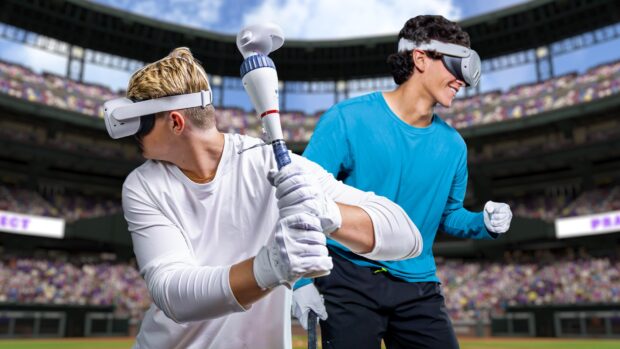
The augmented reality headset has been a hard sell since it went on sale last year, with even the most die-hard tech fans balking at the price tag, coming in at over $3K. Many see it as a luxury item without clear use cases, which is one of the reasons Apple has paused production and is set to reset its strategy.
However, one of the successes of Vision Pro has been its integration with the MLB app and MLB.TV streaming app. It effectively offers a chance to watch games like never before, projecting a screen with live action alongside live feeds of statistics, 3D stadium views, angles of the game not possible through traditional broadcasts, and more. It is clearly focused on two areas – immersion and statistics.
Live stats are a boon for DFS fans
It’s clear that both these elements will be attractive to many baseball fans. Baseball is one of the most stats-centric sports out there, so you can appreciate how a live feed of detailed stats can be used for MLB DFS (daily fantasy sports) players and bettors or those fans who simply love the concept of getting live data of a pitcher’s WAR rate as the game unfolds.
Immersion is obviously a key draw, too. With the Vision Pro, you can literally watch the game as if you were sitting behind home plate. Some of the 3D AR elements feel a little bit clunky, but it’s worth remembering that the Vision Pro has only been on the market for over a year.
The point, as such, is that it will improve, and the offering today is more like a glimpse of what the future of sports entertainment might look like.
A departure from how we engage with sports
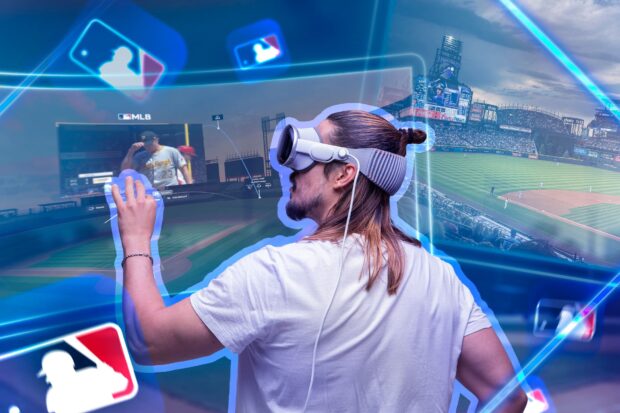
Nevertheless, you can make an argument that sports, especially baseball, were never meant to be viewed in this way. While baseball, as mentioned, is deeply engrained with statistics, it’s also the case that it is a sport designed to be watched passively.
We mentioned lazy days at the ballpark for a reason; that’s part of how we consume baseball.
When we say passive, it does not mean fans lack engagement, but it comes at specific moments as momentum builds through an inning or game as a whole.
The point is that wearing a relatively heavy computer on your face plugs you into constant engagement for the game. You can no longer enjoy it passively, or, on the other hand, you can be simply too engaged with the extra things going on to focus on the game. It’s not that that can’t be enjoyable; it’s just very different from how the majority of people usually consume baseball.
How VR Could Revolutionize Baseball Training
It’s not just about watching—there’s huge potential in how VR could support player development and coaching.
Imagine a pitcher facing virtual batters in high-stakes situations or a rookie training in a simulation of Yankee Stadium before they ever set foot on the mound.
Coaches and players already use analytics extensively, but integrating those same stats into real-time immersive simulations could be game-changing.
Key Ways VR Can Be Used for Player Training:
- Situational Drills: Simulate late-game pressure with immersive crowd noise and lighting.
- Pitch Recognition: Hitters can practice identifying pitches in real-time VR sequences.
- Remote Coaching: Allow coaches to work with players virtually, seeing the same simulation.
- Recovery Visualization: Injured players can stay mentally sharp by reviewing game scenarios.
This usage goes beyond fans—it hints at how the very mechanics of the sport could evolve behind the scenes.
Challenges That Still Need Fixing Before Mass Adoption
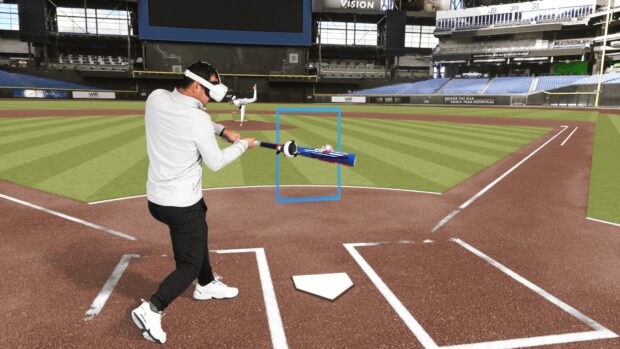
While the experience can be remarkable, several barriers still prevent VR from reaching a broad audience in the context of MLB viewership. It’s not only the price point that serves as a wall. There are social, ergonomic, and technological considerations that need to be addressed.
3 Big Issues Holding Back Widespread VR Use for MLB:
- Device Fatigue: Wearing a headset for 2–3 hours during a baseball game can be physically tiring.
- Social Isolation: Sports are often enjoyed with friends and family—VR limits that shared experience.
- Limited Accessibility: Only those who can afford high-end gear can join in right now, which limits its market.
Until these are resolved, it’s hard to imagine every living room embracing VR baseball as the go-to option.
What Casual Viewers Really Want
Most baseball fans still prefer the simplicity of a good camera angle, a cold drink, and maybe a few chats during innings. The traditional broadcast offers familiarity. Yes, some viewers enjoy second-screen stats on their phones or betting apps. But forcing them to wear a headset and engage in a high-interaction experience may push many away.
And that’s the balancing act MLB will face. Can they create an experience that keeps the spirit of the sport alive while layering in new technology for the next generation?
The Verdict Is Still Out
The truth is we do not know yet whether this will take off as the platform to watch baseball or any other sport or whether it will continue as it is today as a niche way to catch the game.
The feedback has been overwhelmingly positive, but we have been consistently told that VR/AR is the future of entertainment for a long time now, but it has yet to hit the mainstream in its entirety.
Perhaps it will remain that way for a long time to come as fans hold to the traditions of sports viewing.
The tech is advancing. The interfaces are improving. But the heart of the game—its rhythm, its social aspect, its background buzz in American
 Jewel Beat
Jewel Beat
